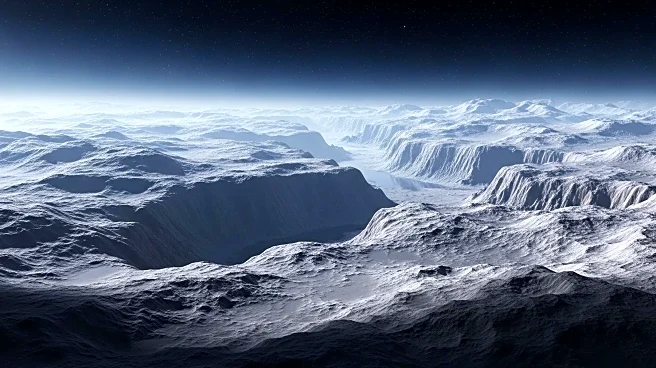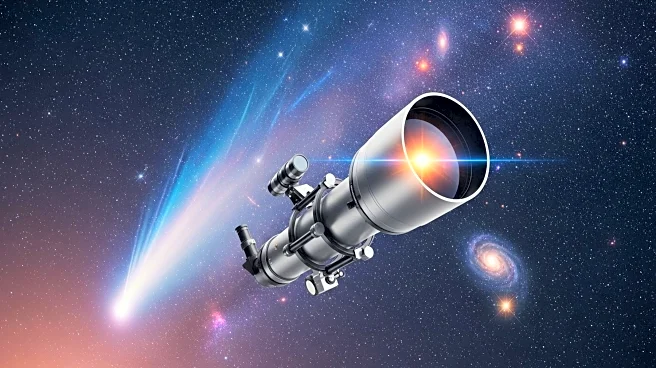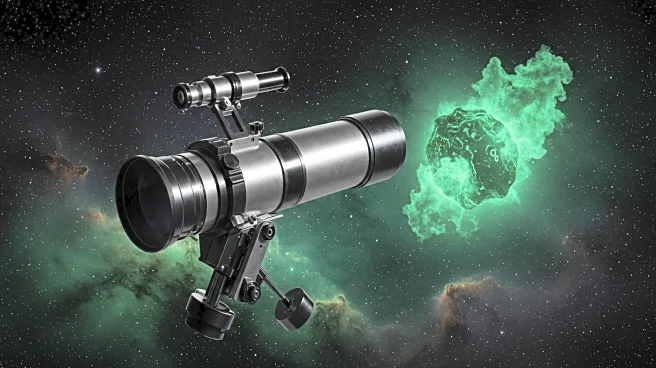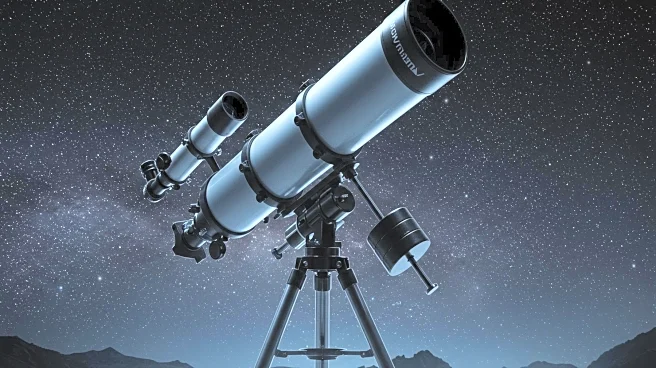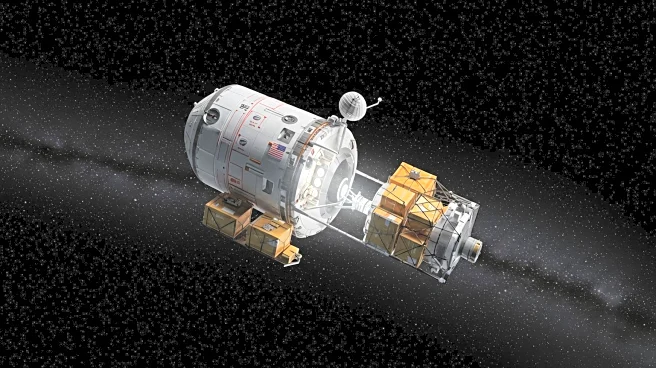What's Happening?
NASA has successfully observed the interstellar comet 3I/ATLAS using the James Webb Space Telescope for the first time. The observation took place on August 6, utilizing the telescope's near-infrared Spectrograph instrument. This analysis provided detailed information about the comet's size, physical properties, and chemical composition. The comet, which is currently outgassing as it approaches the sun, was found to contain carbon dioxide, water, water ice, carbon monoxide, and carbon sulfide. Notably, 3I/ATLAS has the highest ratio of carbon dioxide to water ever observed in a comet, suggesting exposure to high levels of radiation. The comet is believed to have formed in a 'carbon dioxide ice line' and could be approximately 7 billion years old. It was initially discovered on July 1 by NASA's Asteroid Terrestrial Impact Alert System.
Why It's Important?
The observation of comet 3I/ATLAS by the James Webb Space Telescope is significant for several reasons. It provides astronomers with valuable insights into the conditions of the systems where such comets are formed, enhancing our understanding of the early solar system and interstellar space. The high carbon dioxide to water ratio observed in 3I/ATLAS could offer clues about the radiation levels and environmental conditions in its formation region. This data is crucial for advancing scientific knowledge about cometary composition and the processes that govern their evolution. Furthermore, the findings could have implications for future research on interstellar objects and their potential impact on Earth.
What's Next?
NASA and the scientific community are likely to continue monitoring 3I/ATLAS as it approaches the sun, gathering more data to refine their understanding of its characteristics and behavior. The James Webb Space Telescope will play a pivotal role in these observations, potentially leading to new discoveries about interstellar comets. Researchers may also explore the implications of the comet's unique chemical composition and its formation in a 'carbon dioxide ice line,' which could inform theories about the development of other celestial bodies. Continued study of 3I/ATLAS may also contribute to broader efforts in planetary defense and the tracking of potentially hazardous objects.
Beyond the Headlines
The observation of 3I/ATLAS highlights the capabilities of the James Webb Space Telescope in advancing space exploration and research. This event underscores the importance of international collaboration in astronomy, as data from such observations can be shared globally to enhance scientific understanding. The study of interstellar comets like 3I/ATLAS also raises questions about the origins of life and the potential for similar bodies to transport organic materials across the universe. As technology continues to evolve, the role of advanced telescopes in uncovering the mysteries of space will become increasingly significant.




